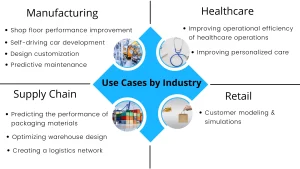5G networks have revolutionized communication. These networks are capable of supporting a large number of devices simultaneously, leading to improved customer experiences.
They provide high data rates and low latency, making them ideal for telemedicine, remote surgery and other services that require real-time responses.
Low Latency
Low latency is a critical aspect of 5G networks. It reduces the time it takes for data to travel between mobile devices and base stations, making the network much more responsive to user requests.
One way to achieve this goal is through multi-access edge compute technology, which moves computing resources from a central server to base station servers at the edge of the network. This reduces data’s travel distance and delays without interfering with core infrastructure.
Another way to reduce latency is by treating different traffic types differently, providing faster speeds for more critical data that needs to traverse the radio faster. This also ensures ultra-reliable low latency communications (URLLC), providing superresponsiveness across a variety of applications.
High Data Rates
5G networks are revolutionizing communication by offering exponentially faster data rates than 4G LTE, opening up a whole new realm of connectivity and data sharing for businesses. They can stream high-resolution video and audio without lag or glitches, enabling more content delivery than ever before to more people on-the-go.
Smart cars will be able to communicate with one another in order to stay on the right route and avoid pile-ups and traffic jams. Health care will also benefit from doctors having remote control of medical robots, saving patients both time and money.
Multi-Gigabyte Capacity
5G networks are revolutionizing communication with their multi-gigabyte capacity. These fast connections are ideal for a range of connected devices and applications, such as video streaming, gaming, remote precision medicine, connected cars and more.
5G technology boasts higher capacity and lower latency than standard LTE, so you can stream a full-length movie in seconds instead of hours.
To offer these fast, low-latency experiences, a 5G network must be designed to support multiple Gigabits of traffic at each node. This necessitates transport networks that support software-defined networking principles, provide precise timing and synchronization, as well as support security measures.
Flexibility
5G brings with it a major advancement: data is transmitted over an extended range of frequencies, enabling it to handle more data. This makes 5G much more reliable in congested urban centers where 4G has had trouble keeping up with demand.
Networks also enable devices to switch between different speeds, keeping your battery from draining. This feature is known as “adaptive bandwidth,” and it’s an effective way for phones to maximize their battery life when making few data transfers.
Another essential technology is network slicing, which enables mobile operators to create multiple virtual networks within one physical network. These slices can be tailored for the specific security, performance and quality requirements of each use case.
Scalability
5G networks are revolutionizing communication by providing the capacity to transmit data over long distances using higher-band frequencies that cannot be blocked by trees and buildings. These’millimeter waves’ (mmwaves) carry data faster and at lower costs than traditional cellular technology’s low-band frequencies do.
Scalability is a fundamental aspect of network performance. A scalable system enables various devices to connect and work efficiently on one network.
Businesses must prioritize this. Employees become frustrated if they must wait a long time before downloading files or uploading data.
Slowness has an adverse effect on productivity and can result in lost business opportunities as well as higher costs. To guarantee 5G networks provide high quality and low latency service, scalable architecture is key.






More Stories
Integrating Digital Twin Technology for Small-Scale Manufacturing and Logistics
The Developer’s Guide to Post-Quantum Cryptography Implementation
Smart Home Automation for Renters: Your Guide to a Smarter, Temporary Space